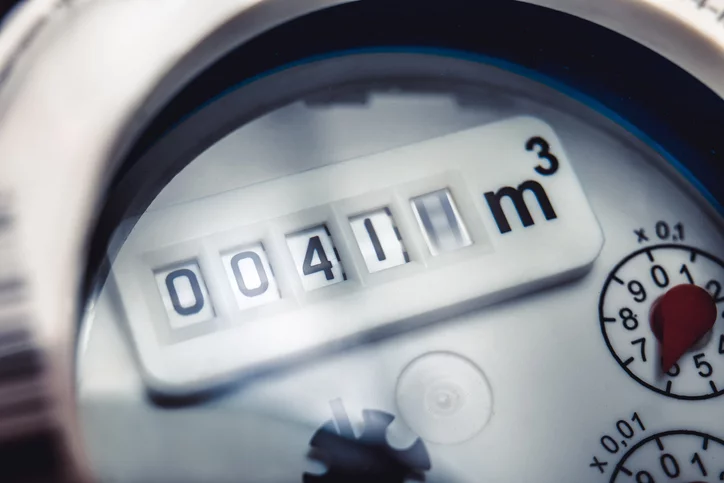Call for input – Improving the WaterSure Financial Support Scheme

Foreword
The WaterSure financial support scheme has been in place for almost 25 years and has served as a key component of the support measures provided by water companies. Over that time, there has been little change in either the eligibility criteria or the nature of the support which is provided to eligible households.
It’s important that the scheme evolves with increased awareness of people’s needs. Given the financial pressure that we are seeing on many households across England and Wales, we want to ensure that WaterSure continues to effectively meet the needs of customers long into the future. This is a message we have also heard clearly from organisations which represent the customer groups most commonly supported by the scheme.
We are keen to hear from you on how WaterSure can be improved to deliver better outcomes for people. The feedback we receive will be used to inform our thinking in developing recommendations for change. We will submit final recommendations to Defra and Welsh Government in early 2025, with a view to these being formally adopted.

Jenny Suggate, Interim Director of Policy, Research and Campaigns
Background
The WaterSure scheme caps the water and sewerage bill for metered, lower- income customers that have high essential water usage needs due to a large family or the presence of a medical condition in their household.
The scheme1 supports customers in England and Wales (at present this is by voluntary agreement in Wales). It operates alongside water companies’ local social tariff schemes, with companies expected to ensure customers eligible for both are supported through the tariff which is most beneficial to them.
More than 220,000 customers were benefitting from WaterSure at the end of March 2023. The average bill reduction was just over £300 per household, per year.
Like social tariff schemes, WaterSure is primarily funded through cross subsidy from other customers’ bills. Unlike social tariffs, there is no requirement for water companies to provide evidence that the level of cross subsidy required to fund WaterSure is supported by their customers. Typically, WaterSure currently adds around £2-3 to customers’ annual bills.
Through this call for input, we want to explore ideas on how the current WaterSure scheme could be improved. We outline some ideas for discussion which are not recommendations but rather a starting point for consideration. We are keen to get your views on these options, the potential challenges and on any other ways you feel the scheme should be improved for customers.
1The Water Industry (Charges) (Vulnerable Groups) Regulations 1999
Eligibility criteria for consideration
Current eligibility
To be eligible the household must pay charges based on metered usage
The purpose of WaterSure is to ensure that people are protected from higher bills driven by high essential water use needs. We are not therefore recommending an option where the scheme is extended to unmetered customers whose charges don’t vary with the amount of water they use. However we are happy to receive any comments or ideas on this aspect of WaterSure eligibility requirements.
Separate to WaterSure, water companies operate social tariff schemes which provide bill support to a wider group of low-income households. In the vast majority of cases these schemes are available to customers who pay unmetered charges.
Current eligibility
To be eligible for the current scheme someone in the household must be in receipt of an income-related benefit. These are:
- Universal Credit
- Pension Credit
- Housing Benefit
- Income-based Jobseeker’s Allowance
- Income Support
- Income-related Employment and Support Allowance
- Working Tax Credit
- Child Tax Credit awarded at a rate higher than the family element
We know that in some instances some companies have also provided support to households in receipt of (non-income related) disability benefits. Where this happens it must currently be funded by the company (rather than customers) as these benefits are not a valid criteria under the statutory scheme.
We would like to explore if the current requirements around income-related benefits are still fit for purpose to allow for those that need support to be able to access it. We outline a number of different options for consideration below, and welcome other suggestions.
Remove the requirement for claimants to be in receipt of benefits
Instead of supporting only low-income customers this would extend help to any household with higher usage due to family size or medical conditions. There would be an option to remove the requirement for benefit receipt from one or both of these groups.
All households that have higher usage due to family size or medical conditions would be able to receive help with their water bill to offset the costs – thus significantly widening the number of households eligible for assistance. This would also remove the amount of evidence which claimants need to provide (ie evidence of benefit receipt) and which has to be evaluated by companies.
Considerations:
- In widening eligibility for the scheme there would be an associated increase in the cost of the cross subsidy required through bills to fund support
- Removing any element of means testing would mean that some very high-earning households would be eligible for support funded by those just about managing on low incomes
- This would remove incentives for water efficiency (in terms of non-essential water use) from a much wider group of customers (given many more customers would pay a fixed bill rather than one which increases with higher levels of usage)
Replace benefit entitlement with a household income level threshold
This would make household income the determining factor rather than benefit entitlement. For example, this could be set at a similar level to the income thresholds used for some social tariffs – e.g. £20,000. This would mean that support to lower-income households would still be available, and not limited to those that are in receipt of benefits. This approach would negate some of the less positive considerations highlighted in option 1 above.
Considerations:
- Depending on where the income threshold was set this could again increase or reduce the number of households eligible, having an impact on the cross subsidy
- Some households currently supported could potentially lose access to help
- Different thresholds may be required for different household sizes in order to avoid larger families missing out on support (due to higher levels of benefit)
- There may be consequences for the process of validating eligibility, and the ability of companies to make use of existing data share arrangements with DWP to target support and validate entitlement
- An income threshold would need to be automatically increased with inflation
Expand qualifying benefits to include non means-tested disability benefits
Some people who have a disability are entitled to specific benefits which recognise the additional living costs they face, irrespective of the level of their income or financial circumstances. Adding these benefits (ie Personal Independence Payments, Disability Living Allowance (for children) and Attendance Allowance) as alternative eligibility criteria, alongside income-related benefits, would expand the number of households eligible for help.
This could help address a key area where people with a disability face higher living costs (and which may not be adequately covered by disability benefits).
Further variations might include placing an income cap on eligibility and/or capping bills to those qualifying on non-income related criteria at a different level.
Considerations:
- Widening the number of households eligible for protection would result in an associated increase in the cost of the cross subsidy required through bills to fund the scheme
- Some very high earning households could be eligible for support, funded by those just about managing on low incomes, although an upper income threshold cap might help address this
Current eligibility
To be eligible for the family size criteria, in addition to receiving income-related benefits, there must be three children or more under 19 and in full-time education living in the household (for whom child benefit is received).
The average UK household size has remained similar over the last 10 years, with 2.36 residents per household in both 2012 and in 2022. However analysis of ONS data suggests that there has been a recent significant increase in lone parent family units which have three or more children. These increased by almost a quarter (24.7%) between 2015 and 2020.
Within this context we would welcome views on the adequacy and scope of the existing WaterSure criteria in terms of targeting support to ‘large families’. We outline a number of different options for discussion below.
Increase or reduce the number of children needed to qualify
Changing the number of children required to claim support would widen or reduce the reach of the scheme.
Considerations:
- Changes would impact the level of customer cross subsidy needed to fund the scheme
- Reducing down to two children could mean families of just 3 people might qualify as a large family – in many cases their bill may already be below the bill cap level (as it stands) and so they would not see a benefit from the scheme
- If the number of children required to claim was increased then some households currently supported would lose access to help
- Changes would also impact the number of households subject to price signals in respect of their non-essential use of water
Extending support to larger multigenerational households
This could help support customers with higher water usage needs due to the presence of older family members within the household group. For example, the criteria could change to three or more people within the following groups living at the property:
- Dependent children
- People receiving state pension or pension credit
Considerations:
- Changes would impact the level of customer cross subsidy needed to fund the scheme
- Older family members living in the household will not normally be fully dependent – they will usually have income from a pension and/or pension credit
There has also been a notable increase in the proportion of multigenerational households. Households which include two or more adult generations rose from 1.8% in 2011 to 2.1% in 2021.
Current eligibility
The regulations name the following conditions:
- desquamation (flaky skin disease)
- weeping skin disease (eczema, psoriasis or varicose ulceration)
- incontinence
- abdominal stomas
- renal failure requiring dialysis at home – unless already getting a contribution to water costs from the NHS
- Crohn’s disease
- ulcerative colitis
However they also require companies to offer the support in respect of any medical condition which requires significant additional water usage.
Companies can require a note from a medical practitioner as evidence in the event of claims related to ‘unlisted’ conditions. We have recently secured agreement from all companies to accept other forms of evidence to help remove barriers to access.
Signal eligibility more clearly
Feedback from organisations representing groups who apply for the scheme has suggested that on occasion there can be confusion about the eligibility of conditions which are not specifically listed in the regulations. This can be particularly true for mental health conditions which can lead to excessive water usage, such as obsessive compulsive disorders or dementia.
It might therefore be helpful to signal the fully inclusive scope of the regulations more clearly by replacing the list of specific conditions with a clear statement such as:
Any physical or mental health condition which may result in the use of significant additional water usage
In giving equal prominence to all conditions it might also be appropriate to remove the ability for companies to require a medical practitioner’s note in some instances – reflecting how the scheme is now applied in practice.
Considerations:
- Removing the specified conditions may make the offer clear to some but may make it less clear for others
Current eligibility
The regulations require that annual charges to qualifying customers are capped at the level of that company’s average bill.
We wish to explore whether this is the right approach, or if limiting or reducing bills in some other way is more appropriate. Some companies have moved to capping bills at their average metered bill level (which is lower) – with the company funding the difference. As a recommendation of our 2021 affordability review, we called on other companies to consider doing this. Many companies are now offering this enhanced support.
We outline a number of different options for discussion below.
Change the cap to the company average metered bill level
This would expand the enhanced help currently available to some customers to those in all company areas.
Considerations:
- There would be an increase in the cross subsidy needed to fund this help.
- In the case of companies already offering such enhanced support, it would enable them to move these costs from being funded by the company to being paid for by customers.
Change the cap to either the local average metered bill or industry average metered bill – whichever is lower
Whichever is lower out of the local average metered bill or industry average metered bill would be used as the cap. This would provide enhanced support in areas where average bills are already higher.
Considerations:
- Changes would impact the level of customer cross subsidy needed to fund the scheme
Replace the cap with a percentage of fixed amount discount
This would provide an element of free water services to all eligible households irrespective of the total amount of water used. This would be more inclusive in terms of households with additional essential use needs but where overall usage is modest. In addition the price signal for non-essential water use would be restored, potentially encouraging greater water efficiency
Considerations:
- Essential water use needs can vary considerably between households – in some cases a fixed or percentage discount may not fully cover these needs
- Changes would impact the level of customer cross subsidy needed to fund the scheme
Introduce a Single Occupier bill cap
A separate bill cap for single person households, with a relevant medical condition, would open up support or enhance help for this group. The cap would be set at an average bill level for a single person. This approach would be more inclusive – people previously below the household cap level would move into support and those already receiving help would get a larger bill reduction.
Considerations:
- There may be some additional administration in terms of water companies validating single occupier status
- Changes would impact the level of customer cross subsidy needed to fund the scheme
Your views and suggestions
In July 2024, we issued this Call for Input seeking views on potential improvements to the WaterSure scheme. We received 24 responses to the consultation.


